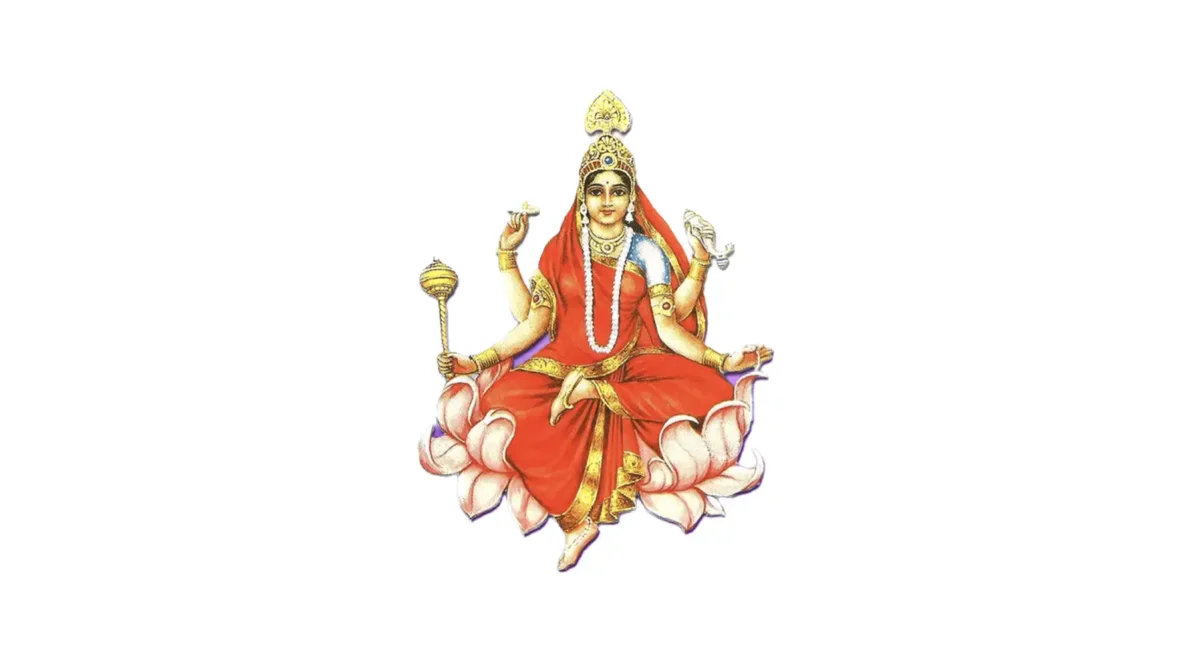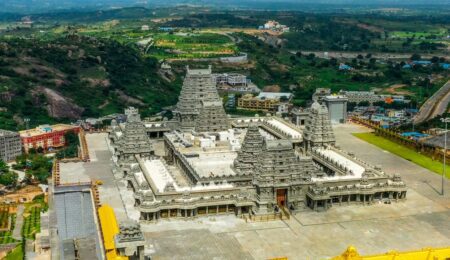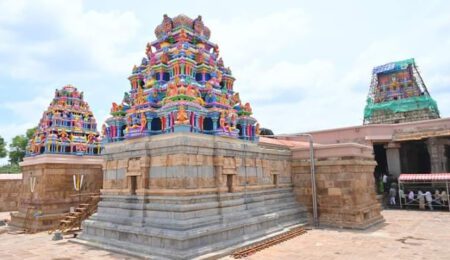Siddhidatri: The Divine Bestower of Siddhis – A Complete Guide to the Ninth Navadurga
Introduction: Who is Siddhidatri?
The name Siddhidatri is derived from two Sanskrit words: Siddhi (supernatural powers or spiritual accomplishments) and Datri (giver). Thus, Siddhidatri Mata is revered as the divine mother who bestows all forms of siddhis upon her devotees. As the ninth and final form of Navadurga, she is worshipped on Navami, the concluding day of Navratri, symbolizing the culmination of spiritual evolution and divine grace.
In Hinduism, Maa Siddhidatri represents the ultimate perfection and completeness. She is the embodiment of divine wisdom, peace, and supernatural power. Her worship is not just a ritual it is a spiritual awakening.
Mythological Background: Origin of Maa Siddhidatri
According to the Devi Bhagwat Purana, when the universe was enveloped in darkness and void, a divine light emerged, taking the form of Mahashakti. From this supreme energy, the Trimurti Brahma, Vishnu, and Shiva were born. To empower them for their cosmic duties, Mahashakti manifested as Maa Siddhidatri, granting them divine consorts and supernatural powers.
- Lord Shiva, through intense penance, received all eight siddhis from Siddhidatri, becoming Ardhanarishwara half male, half female.
- She created Lakshmi, Saraswati, and Parvati, assigning them to Vishnu, Brahma, and Shiva respectively.
- She entrusted Brahma with creation, Vishnu with preservation, and Shiva with destruction.
Thus, Maa Siddhidatri is the source of all divine energy and spiritual accomplishments.
Significance of Worship on Navami
On the ninth day of Navratri, devotees worship Siddhidatri Mata to attain
The Eight Siddhis She Grants:
| Siddhi | Meaning |
|---|---|
| Anima | Ability to become minute like an atom |
| Mahima | Ability to expand infinitely |
| Garima | Ability to become infinitely heavy |
| Laghima | Ability to become weightless |
| Prapti | Ability to be omnipresent |
| Prakamya | Ability to fulfill desires |
| Ishitva | Absolute lordship |
| Vashitva | Power to control all beings |
These siddhis are not just mystical powers—they symbolize spiritual mastery, self-realization, and liberation.
Iconography of Siddhidatri Mata
Maa Siddhidatri is depicted as a serene and radiant goddess seated on a fully bloomed lotus or riding a lion. Her divine form is adorned with celestial ornaments and a purple saree.
Physical Attributes:
- Complexion: Radiant like the moon
- Mount: Lotus or lion
- Arms: Four
- Weapons & Symbols:
- Chakra (Discus) – Symbol of control and dharma
- Shankha (Conch) – Symbol of auspiciousness
- Gada (Mace) – Symbol of strength
- Padma (Lotus) – Symbol of enlightenment
She is surrounded by Gandharvas, Yakshas, Siddhas, Asuras, and Devas, all paying homage to her divine presence.
Maa Siddhidatri Mantra
Sanskrit Mantra:
sanskrit
ॐ ऐं ह्रीं क्लीं सिद्धिदात्र्यै नमः ॥
Meaning:
“I bow to Goddess Siddhidatri, the granter of wisdom, strength, and perfection.”
Benefits:
- Enhances spiritual focus and clarity
- Attracts divine blessings and fulfillment of desires
- Awakens inner siddhis and intuition
Siddhidatri Mata Ki Aarti (Hindi – Devanagari Script)
hindi
ॐ जयति जय सिद्धिदात्री मैया
जयति जय सिद्धिदात्री
हम भक्तों की मैया
तुम हो महतारी
ॐ जयति जय सिद्धिदात्री मैया
अष्ट सिद्धि प्रदायिनी
तुम हो जग माता
तुमसे कुछ न असंभव
सब तुमसे आता
ॐ जयति जय सिद्धिदात्री मैया
ऋषि मुनि देव योगी
नर गुणगान करे
दुष्टों को माँ मारे
काल भी माँ से डरे
ॐ जयति जय सिद्धिदात्री मैया
जग में अनुपम महिमा
दुःख दरिद्र मिटे
दया तुम्हारी मैया
समृद्धि बरसे
ॐ जयति जय सिद्धिदात्री मैया
This siddhidatri mata ki aarti is sung with devotion to invoke her blessings of peace, prosperity, and spiritual fulfillment.
How to Worship Maa Siddhidatri – Navami Puja Vidhi
Step-by-Step Puja Ritual:
- Early Morning Bath – Begin with a ceremonial mahasnan.
- Clean Altar Setup – Place her idol or image on a red or lotus-patterned cloth.
- Offerings:
- White flowers (especially Raat Ki Rani)
- Fruits, coconut, dry fruits
- Bhog: Puri, Sooji Halwa, Kala Chana, Kheer
- Lighting Diya & Incense – Use ghee lamps and sandalwood incense.
- Chant Mantras & Aarti – Recite her beej mantra and perform aarti.
- Meditation – Focus on her form and blessings.
Kanya Pujan:
- Invite nine young girls symbolizing Navadurga.
- Wash their feet, apply tilak, offer chunari and flowers.
- Serve traditional bhog and give gifts (dakshina, bangles, red cloth).
- Perform aarti considering them as divine embodiments.
Spiritual Benefits of Worship
Worshipping Maa Siddhidatri offers both material and spiritual rewards:
Spiritual Gains:
- Awakens the Sahasrara Chakra (Crown Chakra)
- Leads to moksha (liberation)
- Removes ignorance and fear
- Enhances meditation and inner peace
Material Gains:
- Grants success in endeavors
- Brings prosperity and health
- Fulfills desires and removes obstacles
Siddhidatri in Navratri Celebrations Across India
Regional Observances:
- North India: Kanya Pujan and elaborate pujas in homes and temples
- East India: Durga Puja culminates with Siddhidatri worship
- South India: Ayudh Puja and Saraswati Puja coincide with Navami
- West India: Garba and Dandiya Raas conclude with prayers to Siddhidatri
Temples dedicated to her include:
- Siddhidatri Durga Temple, Varanasi
- Maa Siddhidatri Temple, Sagar, Madhya Pradesh
Conclusion: Embracing the Grace of Siddhidatri
Maa Siddhidatri is the divine culmination of Navratri—a symbol of perfection, peace, and spiritual mastery. Her blessings transcend worldly limitations, guiding devotees toward enlightenment and fulfillment. As the giver of all siddhis, she empowers us to rise above ignorance and embrace our highest potential.
On this sacred Navami, may Siddhidatri Mata illuminate your path with wisdom, strength, and divine grace.




Leave a Comment